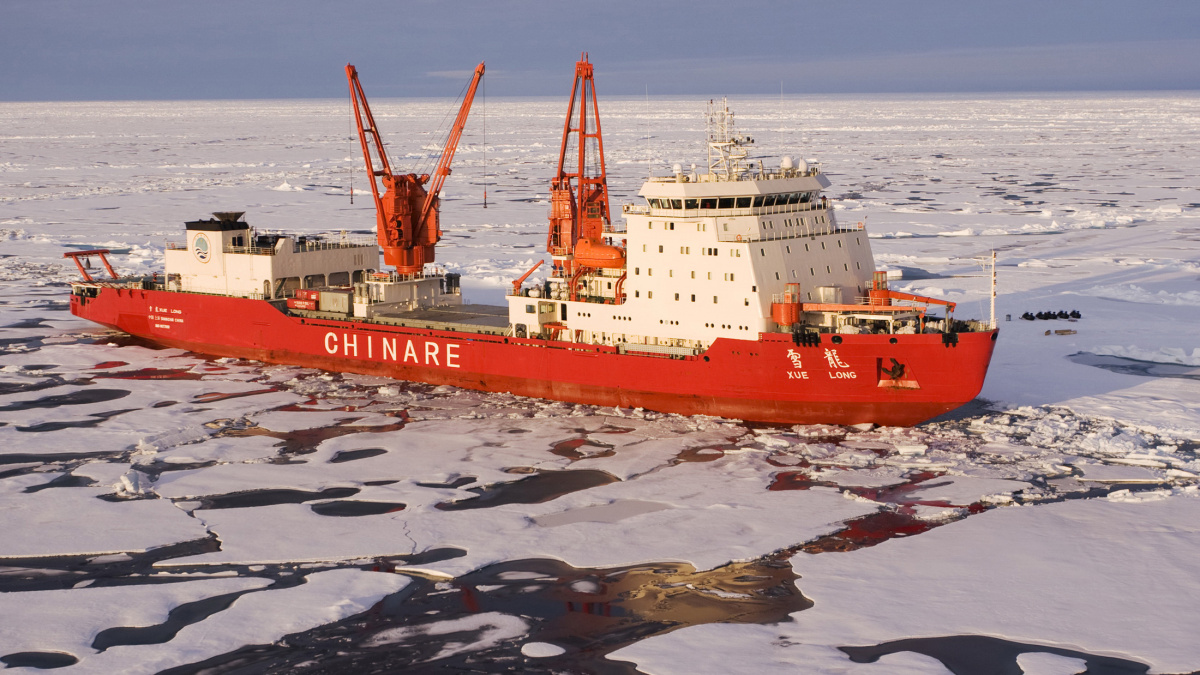
China is subtly installing a larger presence in the Arctic through an extensive partnership with Russia in areas ranging from multi-use ports and airfields to energy extraction, Arctic security experts said Tuesday.
The partnership also includes scientific research and sharing intelligence, surveillance and reconnaissance data. However, this increased interest and activity has not yet led to China establishing a base in Russia.
Beijing’s attention remains focused on Taiwan and the South China Sea, said Liselotte Odgaard, a professor at the Norwegian Institute for Defense Studies. China has “little interest in establishing a military presence” in the Arctic, at least for now, she said.
Marc Lanteigne, an associate professor at UiT the Arctic University of Norway, said China still is a newcomer to the Arctic and is learning by joining other nations in many activities in the region. Beijing “wants very much an open Arctic” where it can seek out business for the Polar Silk Road that goes beyond Russia and ensure a supply of liquified natural gas.
But the effects of the pandemic and economic headwinds that Beijing is facing have caused a slowdown in basic operations in the region, he added.
“The Arctic is not the South China Sea,” where China has historic ties and bases, and where Beijing’s territorial claims have been more aggressive, Lanteigne said at the Hudson Institute event.
“China would be more than willing to help” Russia in developing a region that it sees as its top economic and security priority by building deep water ports and rail hubs and digitizing the waters for commerce and defense, Odgaard said.
But when China looks at the Northern Sea route now, Beijing sees “too much sea ice” to make it immediately valuable for commercial use, she said. To date, China has not scheduled any transits using the route for the coming year.
The panelists compared an open Northern Sea route to the Suez or Panama canals – if free of ice that would cut weeks off shipping times from Asia to Europe.
Odgaard said the two nations have “taken the first step in integrating satellite navigation systems” that have great value militarily. The sharing of intelligence is important for Russia to get better control of entry to the Barents Sea and for Moscow’s Northern Fleet submarine movements to and from the Atlantic.
However, even in an era of closer cooperation between the two powers, Lanteigne doubted Moscow would allow China to base submarines in Russia’s Arctic.
“I don’t think you’ll find a Chinese military base” in the Russian Arctic, Mike Pompeo, former secretary of state, said during the question and answer session following his keynote remarks. But Pompeo didn’t rule out a shared presence with the Kremlin in the future.
Kay Bailey Hutchison, former United States permanent representative to NATO during the Trump administration, said China is “quietly” establishing itself as a “near-Arctic state” and wants a seat at the table in deciding the region’s future. “This is part of a strategy,” similar to one Beijing employed in the South China Sea, to advance territorial ambitions far from the mainland.
The panelists noted there are other nations – Japan, South Korea, Singapore, France and the United Kingdom – that have similar long-term economic and military interests in the Arctic but do not fall within its geographic boundaries.
None of those countries are members of the Arctic Council. Eight nations, including the United States and Russia, make up the council. When Sweden and Finland are admitted to NATO, all but Russia will belong to the security alliance.
The panelists agreed that this changes the security situation in the Arctic, particularly in light of Russia’s invasion of Ukraine in February and China’s increasingly bellicose actions threatening Taiwan. The region is also the subject of a newly-released American strategy to complement NATO’s. The strategy calls for an increased U.S. military presence in Alaska and in NATO nations, expanded military exercises and a commitment to rebuilding its icebreaking fleet.
But how quickly NATO nations can respond with equipment needed to operate in the Arctic is an open question.
“We need Arctic frigates; we need submarines; we need aircraft” to demonstrate NATO’s commitment, Odgaard said.
“We need rules of law in the region” that apply to Russia and China as well as democratic nations, Pompeo said. The rules emphasize respect for other nations’ sovereignty and transparency. “We can lead in the Arctic; we have done it before.”





